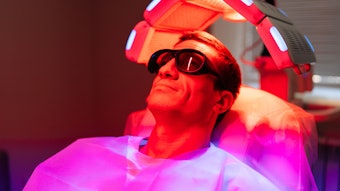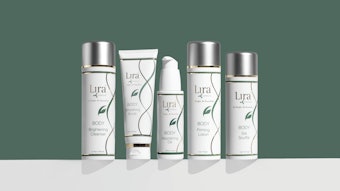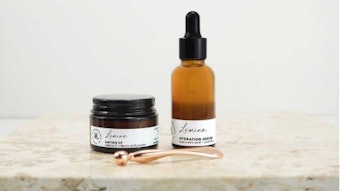
The role of the ethnic consumer continues to be an important part of the skin care industry. The U.S. Census Bureau reports that, by 2050, 49.5% of the U.S. population will have skin of color, replacing baby boomers as the critical growth demographic within the United States and United Kingdom. People of mixed racial heritage have surpassed Hispanics as the fastest-growing demographic group.
The skin care industry is beginning to embrace the needs of women and men of certain ethnic descents. Clients of Middle Eastern, Hispanic, Asian and African-American descent and their subgroups are in need of product and service options targeting their unique skin disorders. Corrective management of these skin types has to go beyond the norm. Skin care professionals must better understand the skin’s mechanism as it relates to ethnic differences, as well as its reactivity to topically applied substances. Once these differences are understood, effective protocol strategies that address the unique skin-related challenges will create value for these clients. It is also important to invest time and incorporate the knowledge of the cultural differences as it pertains to your area’s demographics.
Epidermis
The epidermis is comprised of epithelial tissues that have a thickness ranging from 0.05 mm on the eyelids to 1.5 mm on the soles of the feet. It contains no blood cells but is nourished by the blood vessels housed in the dermis. It is the outermost layer and is comprised of five distinct sections: the stratum corneum (horny layer), stratum lucidum, stratum granulosum (granular layer), stratum spinosum (spiny layer) and stratum germinativum (basal layer).
The discerning factor in many ethnic groups is skin color. The color of the skin is produced in the deepest layer of the epidermis—the basal layer—which houses not only the keratinocytes responsible for the progression of cells to produce the epidermis, but also the melanocytes responsible for the production of melanin. Melanin plays a key role in protecting the skin from the penetration of UV rays. The darker the skin, the less UV penetration and the lower the incidence of skin cancer. The number of pigment-producing cells, called melanocytes, is equal, no matter what the skin color. The difference is the structure and function of these cells.
To produce melanin, there has to be two components: an enzyme—tyrosinase, and an amino acid—tyrosine. When these two components go through a conversion process called dopa, melanin is produced. In skin of color, there is increased tyrosinase activity, producing a more concentrated melanin content. The pigment granule’s size is the basis for skin color differences; the darker the skin, the larger the granule.
There are two distinct components of melanin. One is constitutive melanin, or pigmentation, and the other is facultative pigmentation. Constitutive pigmentation is the pigment that resides within the keratinocytes and is produced from the body’s own metabolism. Facultative pigmentation is introduced through external stimuli.
The melanocyte is a dendritic cell. The dendrites are tentaclelike projections that enable pigment cells to be deposited into the keratinocyte. These projections are longer in darker skin, enabling pigment granule dispersion into the upper layers of the epidermis.
Another unique difference in darker skin is that pigment granules—also known as melanosomes—are dispersed singularly over the nucleus of the keratinocyte. In Caucasian skin, the granules are considerably smaller and are released in clusters. Racially blended and lighter global skin colors disperse a combination of both single—and clusters of—pigment granules. The activity of a melanosome transfer generally takes place within the lower and upper spinosum layer. In some cases, the transferral is disseminated as pigment droppings into the dermis as a result of injury or trauma to the skin.
The barrier layer of the stratum corneum contains more keratinized dead cell layers in global skin. There is greater intercellular cohesion with a higher lipid content, especially in darker global skin. The stratum corneum is equal in thickness to Caucasian skin; the only difference is that darker global skin has a more compacted stratum corneum, evidenced by its 20 cell layers versus only 16 layers in Caucasian skin. The skin’s permeability, when measured by transepidermal water loss (TEWL), is increased, but it is decreased when exposed to higher temperatures. Also, with increased cellular cohesion, there is normal TEWL, providing an increase in the skin’s water content within its layers.
Dermis
The dermis in global skin is filled with dense, fibroelastic connective tissue, composed of collagen fibers, elastic fibers and glycosaminoglycans, which are key elements for retaining moisture in the skin. The dermal structure also contains an increased number of fibroblasts that are larger and more active. The increased activity of the fibroblast, the major cell type of the dermis, influences a thicker and more compact dermis. With an increase of fibroblasts, collageneous fibers are more abundant, contributing to a lower incidence of facial wrinkles, especially in Asians and African-Americans. The downside of excessive collagen is the vulnerability to keloids and hypertrophic scarring.
Darker skin tones have minimal elastin fibers throughout the dermis, resulting in a decrease in elastosis. In the retricular layer of the dermis, there are many more epocrine-aprocrine sweat glands, with a significant increase of aprocrine glands in the axilla, scalp and facial regions. This increase lends to the belief that global skin has more of a tolerance to humid climates. Lastly, the structure comparison reveals numerous nerve endings and lymphatic channels.
A bounty of opportunity
The ethnic skin care market may have been neglected in previous years; however, with the forecasted explosion of many different ethnic populations, skin care professionals have a bounty of opportunity ahead. Now, there is a greater potential for creating a niche market for those who want to specialize in global skin. To capture this market, it is important to be aware that the blending of races brings with it the combined genetics of each ancestry. What is observed visually may not tell the entire story. A thorough education in skin histology, skin conditions and genetic evolution will support the outcome of a successful treatment intervention.
General References
E Berardesca, J Lévêque and H Maibach, Ethnic Skin and Hair, Informa Healthcare, London (2006)
W Montagna, G Porta and J Kenney, Black Skin Structure and Function, Academic Press (1993)
Dermatology and Dermatological Therapy of Pigmented Skin, Informa Healthcare, London (2005)
M Alam, A Bhatia, R Kundu, S Youu and H Chan, Cosmetic Dermatology for Skin of Color, McGraw-Hill Professional (2008)
W Montagna and K Carlisle, The Architecture of Black And White Facial Skin, J Am Acad Dermatol 929–937 (Jun 1991)
Pamela Springer is a licensed esthetician, as well as the founder of The Skin & Makeup Institute of Arizona and the Academy of Advanced Aesthetics & Permanent Cosmetics. She conducts advanced global skin care training for licensed professionals. In 2009, she launched a corrective product line, Global Skin Solutions, to address the specialized needs of global skin.










